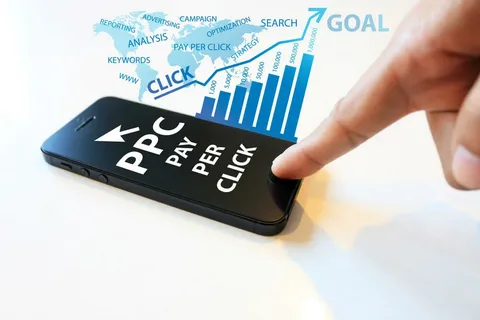What is the PPC model and how is it used in advertising?

To find more interested users, companies run ads. Advertisers often use the PPC model to quickly generate leads. It allows businesses to pay only for clicks on their ads. The article explains where PPC advertising is used and how to use it to increase the flow of targeted traffic.
What is PPC
PPC (Pay Per Click) is a model where only clicks on ads are paid. A click is considered a transition to any landing page: to a catalog, a section with a promotion on a landing page, or another.
The goal of the PPC payment model is to help businesses optimize their promotion budget and attract more target audiences. The main difference from models where you pay for ad impressions is that PPC ads pay only for clicks on them. This allows you to attract people who will not only see the ad, but also click on it.
What is the difference between PPC, CPC, and other models?
PPC is often compared to CPC, but this is incorrect, since CPC reflects the cost per click in the PPC model. And the payment model determines how exactly advertising will be paid.
In addition to PPC, there are other payment models. The right one is chosen based on the tasks that the campaign faces.
How and where to use PPC in marketing
The PPC (Pay Per Click) model is chosen to promote new products and services. It is suitable for a variety of formats: videos, interactive banners, text and image ads, and others.
In order to display ads in the most relevant way, Search results select keywords and phrases that users use when searching for products or services. This helps to achieve targeted impressions and attract the attention of potential customers.
In ecommerce, PPC traffic helps to bring users to online stores. Banner ads can direct visitors to the main page of the site, to the product catalog, or to a specific product card that may interest them and encourage them to buy.
Location-based online businesses can use keyword phrases and target campaigns to specific groups of people who live or work nearby. This will help you attract more targeted customers and increase conversions. So, this method is suitable for coffee shops and restaurants, beauty salons and car repair shops.
What are the pros and cons of PPC advertising
PPC advertising allows businesses to quickly acquire users and convert them into customers. In order to effectively apply the model, it is useful to take into account its strengths and weaknesses.
Pros
✔️ Quick results. Ads are immediately shown in Search to people who enter relevant queries. The search engine creates two types of search results based on these queries: advertising and organic. Ads that relate to PPC promotion are always shown above others, which allows you to attract the attention of the target audience.
✔️ Targeted targeting of interested users. You can target a specific audience according to many parameters. For example, if a person clicks on an ad and visits the site, they are most likely interested in the offer. It is easier to motivate such users to buy a product, order a service, or leave a request.
✔️ Powerful ways to measure results. You can accurately measure performance by analyzing the number of clicks, conversions, and cost per click (CPC). This helps you optimize your campaign by turning off low-performing ads and changing bids for creatives that perform best.
Cons
⛔ A limited range of tasks. PPC promotion is suitable for companies that want to get more targeted traffic in a short period of time. If you need to increase brand awareness, you should choose another model, such as CPM.
⛔ Risk of overpaying for low-quality traffic. Going to a landing page may not always end with a conversion action on the part of the user. To increase the effectiveness of PPC advertising, you need to pay attention not only to the attractiveness of the ad, but also to the quality of the site. A user-friendly and intuitive interface is more likely to encourage a user to buy.
- Arts
- Business
- Computers
- الألعاب
- Health
- الرئيسية
- Kids and Teens
- مال
- News
- Recreation
- Reference
- Regional
- Science
- Shopping
- Society
- Sports
- Бизнес
- Деньги
- Дом
- Досуг
- Здоровье
- Игры
- Искусство
- Источники информации
- Компьютеры
- Наука
- Новости и СМИ
- Общество
- Покупки
- Спорт
- Страны и регионы
- World


